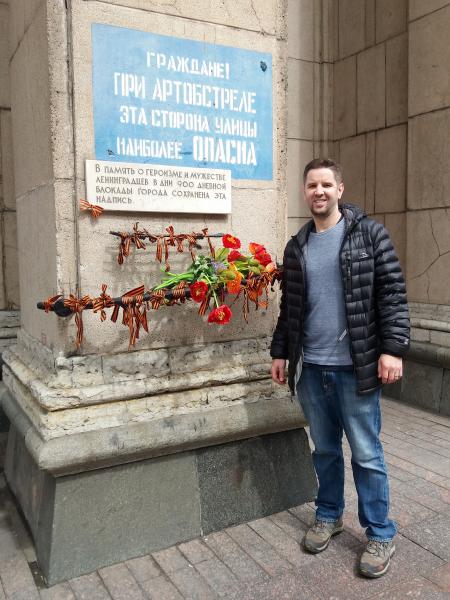
Sean McDaniel
Adjunct History Instructor at Schoolcraft College, Livonia, MI
When did you first develop an interest in Slavic, East European and Eurasian Studies?
I first became interested in Russia when I was very young. I do not exactly know what attracted me to the country or its history, but I recall always being captivated by the language. Growing up, I would repeatedly watch the opening scenes of the film The Hunt for Red October just to hear Sean Connery speak Russian. It was only later that I realized how bad it actually was, but I can still chuckle about it. My general interest in history, though, took me on a path toward becoming a secondary educator. After earning a B.A. in Education from the University of Michigan, I decided that I could not continue to let Russian history be simply a hobby of mine. I pursued an M.A. at Wayne State University before moving on to Michigan State University for my Ph.D. I was lucky to have generous amounts of financial support from both institutions along the way, and from Fulbright-Hays which funded my dissertation research in Kazakhstan and Russia in 2017. Additionally, my language coursework opened the door for federal Title VIII funding opportunities which allowed me to study Russian at the University of Pittsburgh’s Summer Language Institute as well as Kazakh at Indiana University’s Summer Language Workshop. It was through Pitt’s program, actually, that I was able travel to Russia for the first time in 2010. It was an experience I will never forget.
What is your current research/work project?

What does your ASEEES membership mean to you? How has your involvement with ASEEES helped to further your career?
ASEEES is special in the way it brings together such a large and diverse community of experts in its effort toward advancing scholarship in the field. I am extremely grateful for the work it does and happy to be a member. Receiving my copies of Slavic Review in the mail is always an exciting time and being able to participate in the annual conventions is both extremely rewarding and beneficial. The network that ASEEES has created and continues to foster is remarkable.
Besides your professional work, what other interests and/or hobbies do you enjoy?
When I am not teaching or otherwise occupied in my research, I enjoy escaping to Michigan’s Upper Peninsula where my family has a cabin on Lake Superior. Spending time outdoors with my wife and our two daughters is always welcome and has offered a great deal of respite from the challenges of the past year.